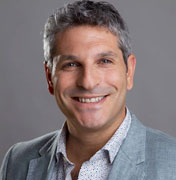High-rise
 Whenever a novel has been deemed ‘unfilmable’, I worry when the film of it finally does come out, especially after 40 years of several aborted attempts to do so. This is exactly the curious case of JG Ballard’s 1975 book High-Rise, about a supposedly self-sufficient new tower block, with its own supermarket and leisure centre. The novel now finds itself given the big-screen treatment by director Ben Wheatley, who’s fast becoming the darling of the filmgeek set.
Whenever a novel has been deemed ‘unfilmable’, I worry when the film of it finally does come out, especially after 40 years of several aborted attempts to do so. This is exactly the curious case of JG Ballard’s 1975 book High-Rise, about a supposedly self-sufficient new tower block, with its own supermarket and leisure centre. The novel now finds itself given the big-screen treatment by director Ben Wheatley, who’s fast becoming the darling of the filmgeek set. I like Wheatley, in general, and was a fan of his black comedy Sightseers. But Wheatley doesn’t like film critics much, he’s been saying. He should do, as they’ve elevated him to whatever status he’s got. It was critics’ votes and praise that have brought his films to a wider audience and to the attention of Martin Scorsese, who’s producing Wheatley’s next film, a thriller called Free Fire.
What Wheatley’s experiencing now is his first critical backlash, mainly because this is his first big film with big stars and a decent budget and it is, quite frankly, a mess. A gloriously ambitious, mad mess, but a right mess for sure.
It’s the kind of film that starts at the top of the blackboard and draws its fingernails down in slow, screeching, deliberately cruel patterns. Tom Hiddleston plays surgeon Robert Laing, who moves into a bachelor pad in a gleaming new tower block and just wants a quiet, secret life. Following the success of The Night Manager, Hiddleston can seemingly do no wrong, and I’m sure many people will go to see High-Rise just for him – he even appears naked on a sun lounger at one point (okay, calm down).
But Laing, for all his sangfroid and diplomacy, finds himself drawn into the society of this town in the sky. The High-Rise, typical of Ballard’s dystopian micro-worlds, is riven with the gradations of class and status and Laing is sucked into the parties, the sex, the top-down decadence, where Sienna Miller flirts from the balcony above and Luke Evans’s pugnacious, moustachioed documentary-maker pontificates.
Indeed, Laing becomes a bridge between the layers of this combusting society, acting as a conduit between the oppressed lower floors and the debauched upper echelons – all the way up to the architect (Jeremy Irons), who canters about the penthouse rooftop gardens on a white stallion. That’s when he’s not throwing parties in the style of Louis XIV – all wigs, beauty spots, shag-pile carpets and string quartets playing versions of Abba’s SOS.
Some of this is spectacular, bitterly funny, crazy. But some of it quickly becomes frenzied and flailing. We’re as lost as our hero, but at least he’s Tom Hiddleston and has presumably read the script, so he’s got a vague idea where it’s headed.
We’re just poor audience members at the mercy of Wheatley’s directorial whims. Now, many people like this cinematic wildness, this teasing. I found it grating. I wanted it to stop; I wanted to, like a man in the film, throw myself off the nearest balcony and onto some classic 1970s car parked below, a Triumph Stag or a beige Rover 3500.
This film has its fans and its cool poster and PR campaign position it as the hip choice. Admirers think Wheatley’s a genius on a par with Nicolas Roeg. He’s got an eye, for sure, and an ear, but he can lose the plot and, call me old-fashioned, I believe that somewhere, like EM Forster says of the novel, ‘yes ah yes, a movie tells a story’. I think this one got away from the director. I don’t think he marshalled all the elements you see on its kaleidoscopic poster. It’s an admirable, irritating failure. Even its ‘message’ felt empty, which it shouldn’t, given how fractured and teetering our society is these days.
I emerged angry, beaten, depressed. Which is how I assume Wheatley, and Ballard, wanted me to be. You’ll have to decide if that – and occasionally seeing Tom Hiddleston in the buff – is enough.



